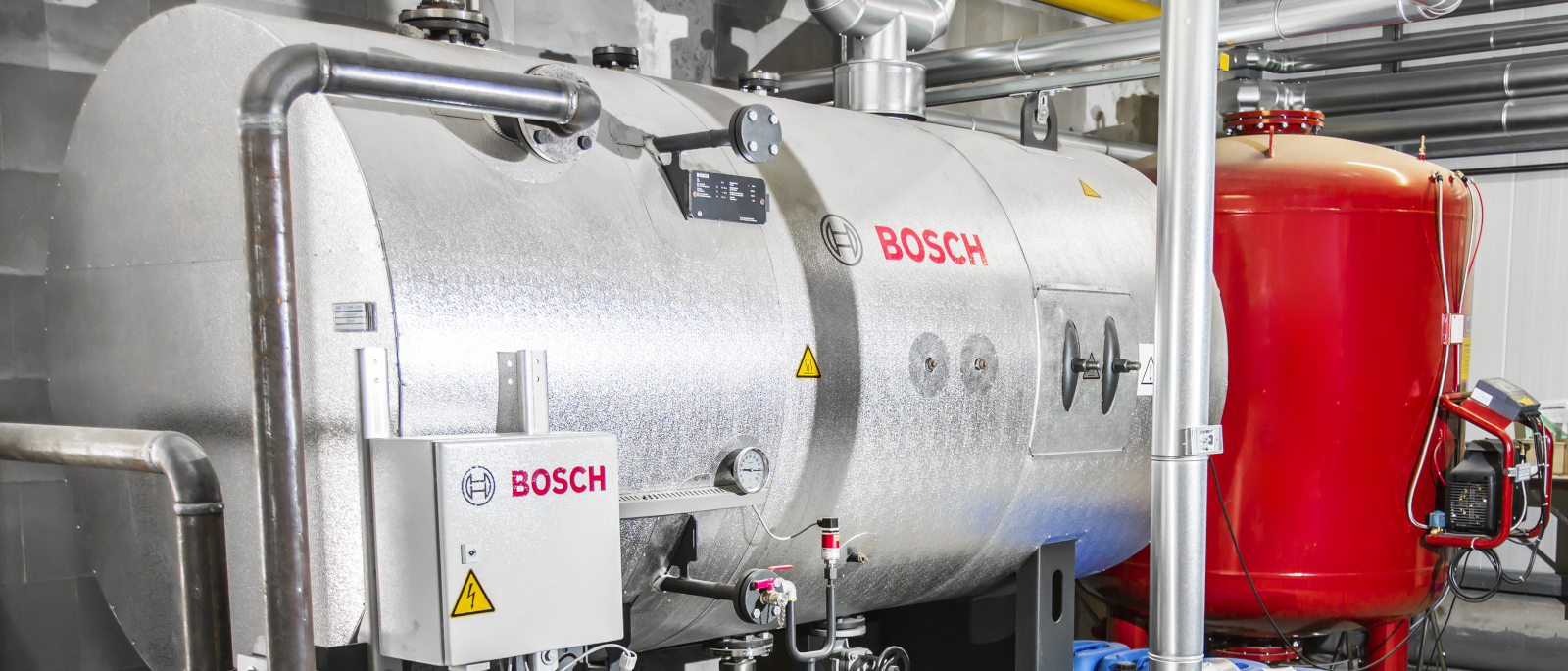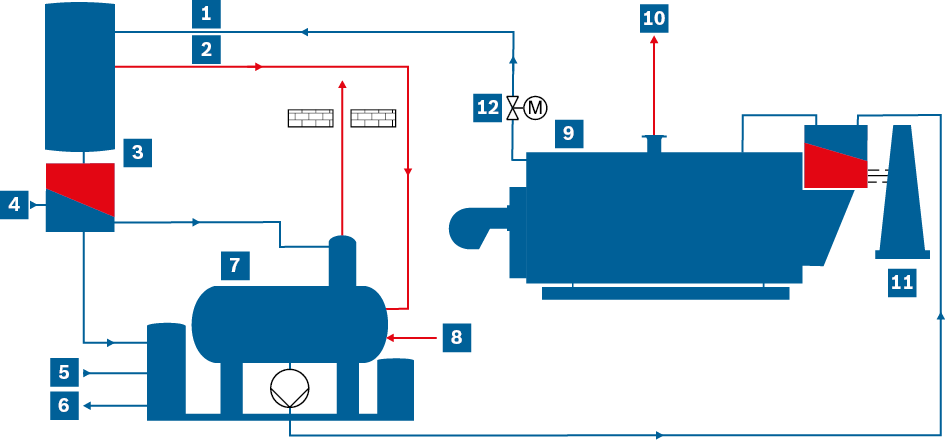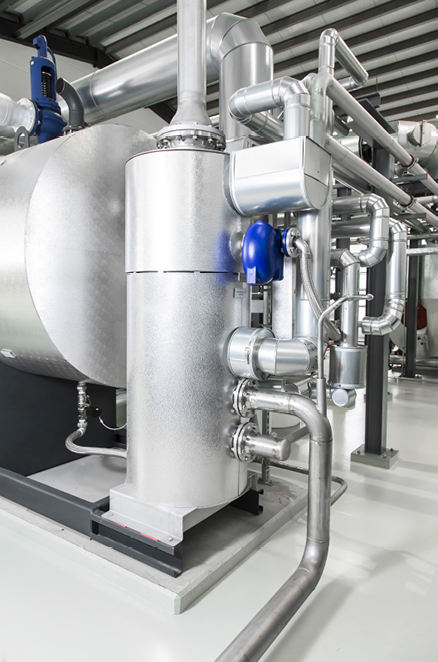
Increasing efficiency on the water and condensate side
Surface blowdown and bottom blowdown
Depending on the type of water treatment, the feed water of the steam boiler contains substances that accumulate as a result of evaporation inside the boiler and are still harmful to or disrupt the operation of the boiler.
Fig. „Ingredients of freshwater and condensate“
Some of the feed water must therefore be removed via the surface blowdown valve and bottom blowdown valve. The blowdown rate a is normally between 3 – 5% with reference to the feed water quantity.
So the quality of boiler water is always acceptable for the boiler and the system and to avoid unnecessarily high surface blowdown quantities, the surface blowdown valve and bottom blowdown valve should be designed so they can be controlled.
As the water removed from the boiler is at boiling point (e.g. at a temperature of 195°C at 13 bar), a considerable amount of energy is lost if no heat recovery systems are installed.
By using an expansion and heat recovery module, up to 90% of this energy can be returned to the boiler system and large quantities of cooling water can be saved.
With an average operating pressure of 13 bar and a blowdown rate of 5%, the energy loss without heat recovery is around 1.4% of the boiler output. In this case the heat recovery can save around 400,000kWh/a (based on a 10 t/h boiler operating at full load for 4,200 hours).
_EN.png)
Potential savings of expansion and heat recovery (EHM or EHB)
Following surface blowdown, the waste water is expanded in the heat recovery module (EHM or EHB) to the pressure of the feed water vessel and returned to the EHM or EHB, which can save heat-up steam. A plate heat exchanger installed downstream of the expansion vessel cools the remaining brine down further. The heat acquired is used to preheat the make-up water, which also saves heat-up steam for deaerating.
Product: Expansion and heat recovery module EHM
Product: Expansion, heat recovery and blowdown module EHB
Only the bottom blowdown water cannot be used here because the solids it contains can cause problems in the pressure reducer and heat exchanger.

Schematic representation of expansion and heat recovery
|
|
Water |
|
Steam |
|
|
Boiler water brine |
|
Cooling water |
|
Steam boiler |
||
|
|
Expansion steam |
|
To sewer |
|
Steam |
||
|
|
Expansion and heat recovery module |
|
Feed water vessel |
|
Chimney |
||
|
|
Make-up water |
|
Heat-up steam |
|
Desalting valve |

Expansion and heat recovery module EHB
The corresponding module is available for new systems with integrated bottom blowdown vessel and also as a retrofit solution for an existing bottom blowdown vessel.













